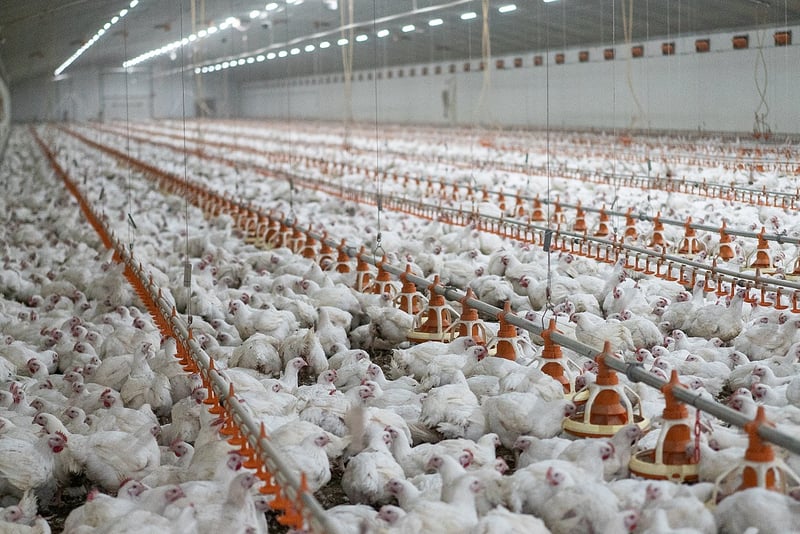
Bird flu (avian influenza): what you need to know
Blog
In recent months, the world has been grappling with the resurgence of bird flu (avian influenza), a highly contagious viral infection that primarily affects birds but is now spreading to mammals causing public health concerns.
What is bird flu?
Bird flu, also known as avian influenza, is a viral infection caused by influenza viruses. While these viruses naturally occur in wild birds who are typically unaffected by the disease, they can transmit the virus to domestic birds, including those raised for food and those kept as pets. Avian influenza is classified into two main categories based on the severity of illness it causes in birds:
- Low pathogenic avian influenza (LPAI)
- Highly pathogenic avian influenza (HPAI)
While most cases are of the low pathogenic variety, outbreaks of the highly pathogenic strains are particularly concerning as they can cause severe illness and death in birds, as well as other animal species, including humans.
The latest bird flu outbreak in Canada
While there are many different strains of bird flu, the recent outbreak across North America has been predominantly linked to the HPAI H5N1 strain – one that is transmissible to humans.
The strain was detected in Canada and the United States in late 2021 in wild birds, and soon began impacting flocks of birds raised for food. When poultry farms face an outbreak of bird flu, it is often policy to cull the whole flock to prevent further spread, leading to thousands of birds being killed. To cull this many birds at once, some jurisdictions use inhumane methods such as spraying firefighting foam over them to suffocate them, bird sealing the barn up and piping carbon dioxide in, or simply shutting down the ventilation which raises the temperature in the barn to levels where animals die. As of March 5, 2024, the estimated number of birds impacted by H5N1 HPAI in Canada alone was a over 11-million.
Bird flu jumps to mammals
While bird flu, as the name implies, is primarily a disease of birds, it can also infect wild and domestic mammals. As influenza viruses are constantly mutating, novel strains can emerge that can impact new species.
While bird flu viruses have been detected in mammals sporadically in the past, a significant development occurred in December 2023 when bird flu was detected in both polar regions, signifying a concerning expansion of the virus’s geographical reach and adaptability.
- The first confirmed case of a polar bear dying from bird flu was recorded in Alaska.
- A staggering number of elephant and fur seals were infected in the Antarctic.
So far, the ongoing outbreak has infected 48 different mammalian species from all corners of the world, from red foxes and skunks in Canada to a captive Bengal tiger in China.
In March, a goat died from HPAI H5N1, the first case of a ruminant (cattle, sheep, goats) testing positive for bird flu in the United States. Only a few days after the first goat case was announced, some dairy cattle in the United States were confirmed to have been infected with the virus.
Thousands of animals have died and thousands more have been culled in attempt to stop the spread of bird flu.
The avian flu outbreak among minks on fur farms is particularly worrying for human health implications. Historically, H5N1 has not been known to spread between mammals, it’s typically transmitted between or from birds, but the rapid spread of the virus on these mink fur farms indicates a mutation in the virus favouring mammal-to-mammal transfer. This outbreak has sparked some serious concerns about the potential spread to and between humans.
Bird flu and the risk to human health
While bird flu infections in humans have historically been rare, it’s important to remain cautious. With the increasing number of mammals affected by H5N1 avian influenza, there are concerns that the virus will mutate to infect humans more easily.
Humans can be infected through direct contact with infected birds (wild, domestic, or pets) or anything the infected animals have encountered. There is currently no evidence that fully cooked meat or eggs can be a source of bird flu for humans, but food safety handling practices should always be followed.
Curbing the spread of bird flu
- If you have a bird feeder, ensure that you regularly clean it with soap and water and clean up any uneaten seed. If you ever notice sick or dying wild birds, remove the feeder immediately and contact your local wildlife rehabilitation centre.
- Never touch wild animals. If you come across sick or injured wildlife, make sure you report it to your local wildlife rehabilitation centre and always wear gloves if you need to contain an injured animal.
- Conserve migratory bird habitat. Migrating birds are known to spread bird flu, so it’s important to protect their habitat. Not only does this contribute to their conservation, but it also creates a natural separation of wild birds and birds raised for food, reducing the potential for disease transmission.
- If you have a pet bird or keep chickens or ducks, be sure to educate yourself on proper protocols to protect your flock.
More critically, we need to completely rethink the way we raise animals for food. Factory farming not only compromises animal welfare but also poses serious public health risks. The intensive conditions on these farms create an ideal breeding ground for diseases like avian flu.
Help us advocate against factory farms in Canada. Send a message to the Federal government demanding a moratorium on this cruelty now.
Sign the petition to help stop factory farms
The suffering of innocent animals on factory farms is nonstop. Act now to send a message to government: "No more new factory farms in Canada".
Banner photo: Bear Witness Australia / We Animals Media
